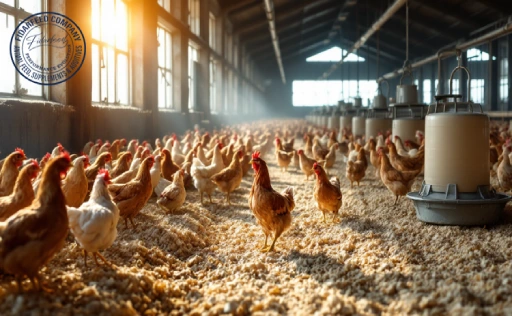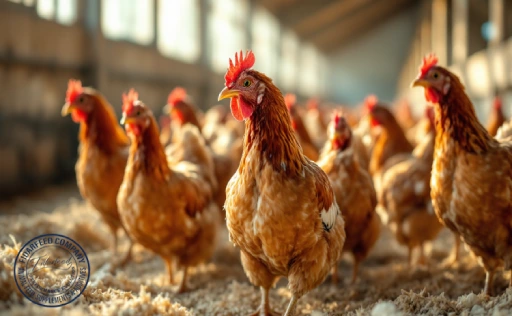
Tilapia production is one of the fastest-growing sectors in aquaculture. With rising global demand and competitive market dynamics, fish farmers are under constant pressure to produce high yields at the lowest possible cost. One of the most powerful tools to achieve this is optimizing the Feed Conversion Ratio (FCR). Understanding and improving FCR isn’t just a technical goal—it’s a business necessity. Whether you’re a seasoned tilapia breeder or just starting your journey in fish farming, this article will guide you through practical, science-backed strategies to reduce FCR and maximize your profitability. Let’s dive in.
What is Feed Conversion Ratio (FCR) and Why It Matters in Tilapia Production?
Feed Conversion Ratio (FCR) is a crucial performance metric in aquaculture that measures how efficiently fish convert feed into body mass. It’s calculated using a simple formula:
FCR = Total Feed Consumed (kg) ÷ Total Fish Weight Gain (kg)
A lower FCR means your fish are converting feed into growth more efficiently, which translates directly to cost savings and higher profits. In commercial tilapia production, even a small reduction in FCR can lead to significant improvements in profitability.
Learn more about: Probiotic Supplement for Aquatic Animal
The Real Cost of a High FCR: How It Affects Profit Margins in Tilapia Farming
High FCRs indicate wasted feed, slower growth, and increased operational costs. For example, if your FCR is 2.0 instead of 1.5, you’re spending 33% more on feed for the same weight gain. Considering that feed accounts for up to 70% of total production costs, this inefficiency can seriously erode profit margins.
Learn more about: Why Choose Prepared Feed for Your Farm Animals: Livestock, Poultry, and Aquaculture
Additionally, uneaten or poorly digested feed can pollute water, increase disease risks, and further impact farm performance.
Top Factors That Influence FCR in Commercial Tilapia Production
Several interconnected elements influence FCR in tilapia production:
-
Genetics: Some strains of tilapia naturally have better feed efficiency.
-
Feed quality: Poorly formulated or expired feed can reduce nutrient absorption.
-
Environmental conditions: Temperature, oxygen levels, and water pH affect metabolism.
-
Feeding practices: Overfeeding or underfeeding leads to imbalances.
-
Health management: Diseases and stress lower feed utilization.
Understanding these variables is the first step toward developing a strategy to reduce FCR.
Learn more about: Reducing Fish Mortality in Aquaculture with Probiotics
Choosing the Right Feed: A Game-Changer for Lowering FCR in Tilapia Farming
Not all feeds are created equal. High-quality, nutritionally balanced feed tailored for the specific growth stage of tilapia is key. Look for feeds that contain the right protein-to-energy ratio, essential amino acids, and digestible ingredients.
Learn more about: Healthy Shrimp, Higher Yields: Key Nutrients for Success
A study published in Aquaculture Research showed that using floating pellets with higher digestibility improved FCR by up to 20% in Nile tilapia.
Also, ensure proper feed storage. Exposure to moisture or sunlight can degrade feed quality, even if it started off perfect.
Smart Feeding Strategies to Optimize FCR and Boost Tilapia Growth
Feeding your tilapia isn’t just about quantity—it’s about timing, frequency, and technique. Here are some tips:
-
Feed smaller amounts more frequently to align with the fish’s natural eating behavior.
-
Observe feeding behavior—if fish stop responding after a few minutes, you may be overfeeding.
Learn more about: Protect Your Aquatic Life with Probiotics
-
Automated feeders can help maintain consistency and reduce labor costs.
When tilapia are fed according to their actual needs, they grow faster, stay healthier, and convert feed more efficiently.
Water Quality Management: The Hidden Key to Better FCR in Tilapia Production
Water quality often goes unnoticed until there’s a problem, but it directly impacts fish metabolism and feed utilization. Key parameters to monitor include:
-
Dissolved oxygen (DO): Keep it above 5 mg/L.
-
Temperature: Ideal range is 26–30°C.
Learn more about: Can Probiotics Really Boost Fish Growth in Aquaculture?
-
Ammonia and nitrite levels: Should be kept as close to zero as possible.
Poor water quality stresses fish and disrupts digestion, leading to higher FCRs. Use aeration, filtration, and regular monitoring to maintain ideal conditions.
Stocking Density and Its Impact on Feed Efficiency in Tilapia Ponds
Overcrowding leads to competition, stress, and stunted growth—all of which push FCR in the wrong direction. On the other hand, understocking can waste space and resources.
Learn more about: Stress in Aquaculture: Understanding the Effects and Mitigation Strategies
The sweet spot for stocking density depends on your system (pond, cage, or tank) and management practices. In general, maintaining densities between 2–4 fish per square meter in pond systems helps optimize feed efficiency and fish welfare.
Disease Prevention and Health Monitoring to Maintain a Low FCR
Sick or stressed fish don’t eat properly—and when they do, they don’t digest efficiently. Regular health checks, proper biosecurity, and preventive care like vaccination (where applicable) can help you avoid outbreaks.
Also, don’t overlook signs like changes in swimming patterns or appetite. Catching issues early means you can take action before FCR is impacted.
Probiotic Use in Tilapia Farming: Natural Support for Lower FCR
Probiotics—beneficial microbes added to feed or water—are gaining popularity in commercial tilapia production. They improve gut health, enhance digestion, and reduce pathogen loads.
Learn more about: Feeding Farmed Fish: Best Practices and Nutritional Requirements
Research published in Fish & Shellfish Immunology showed that Bacillus species probiotics reduced FCR by up to 15% in grow-out tilapia systems. These natural enhancers are a sustainable way to improve feed efficiency while supporting fish health.
Data Tracking and Technology: How Smart Monitoring Tools Can Improve FCR
Modern tilapia farming is embracing digital tools to make informed decisions. Mobile apps, automatic feeders, and cloud-based FCR trackers can help you:
-
Monitor daily feed inputs and growth rates.
-
Get alerts for abnormal feeding patterns.
Learn more about: Discover Zeolite Benefits for Health in modern animal breeding: From Cattle to Fish
-
Track long-term trends to adjust management strategies.
Technology empowers both small- and large-scale farmers to take control of their data and use it to drive continuous improvement.
Case Studies: Success Stories from Tilapia Farmers Who Improved Their FCR
Case Study 1: Philippines – Enhanced Feed Management Practices
In the Philippines, tilapia farmers implemented a series of best management practices (BMPs) focusing on feed formulation and feeding strategies. Collaborating with the Food and Agriculture Organization (FAO), these farmers adopted scientifically developed feeding tables and high-quality feeds. By optimizing feeding frequencies and rations, they achieved significant improvements in feed efficiency.
Case Study 2: Egypt – Adoption of Soy-Based Feeds and Training
In Egypt, a significant initiative aimed at improving aquaculture practices involved replacing traditional fishmeal-based feeds with soymeal-based, all-plant protein feeds. This transition was part of a broader strategy to enhance the growth and economic performance of Nile tilapia.
These examples show that with the right strategies, tangible improvements are possible—even in challenging environments.
Learn more about: Immune Boosters for Shrimp: What Additives Actually Work?
Final Thoughts: Building a Sustainable and Profitable Tilapia Production System
Reducing Feed Conversion Ratio isn’t a one-time fix—it’s an ongoing process that requires attention to detail, informed decision-making, and a willingness to adapt.
From choosing the right feed to managing water quality and embracing technology, every decision plays a role in building a more efficient and profitable tilapia production system.
Whether you’re farming tilapia in ponds, tanks, or cages, applying the tips in this guide can set you on a path toward long-term success. Your fish will grow better, your costs will drop, and your business will thrive.
Have questions or a success story to share? Drop a comment below or get in touch—we’d love to hear from you!








